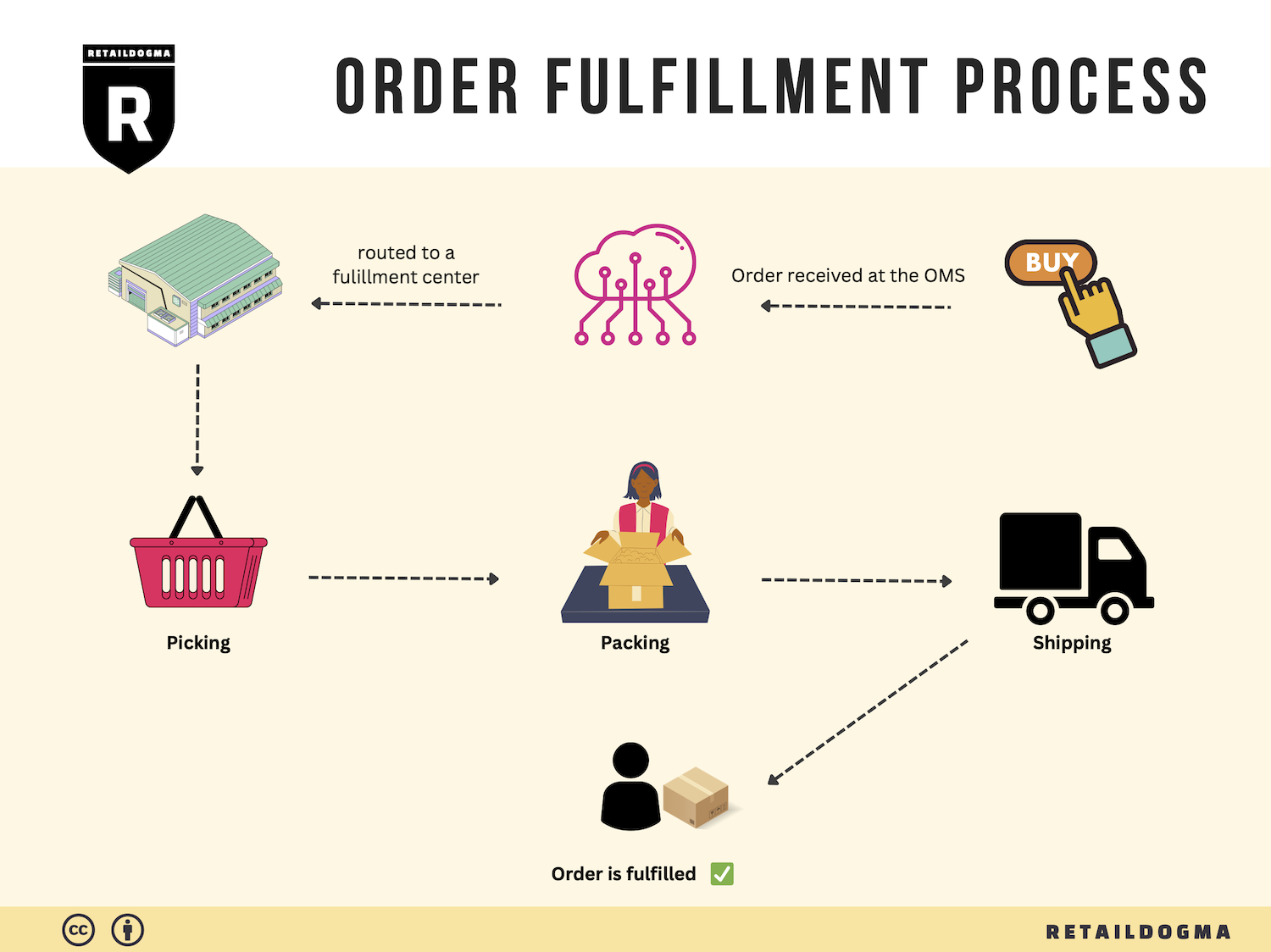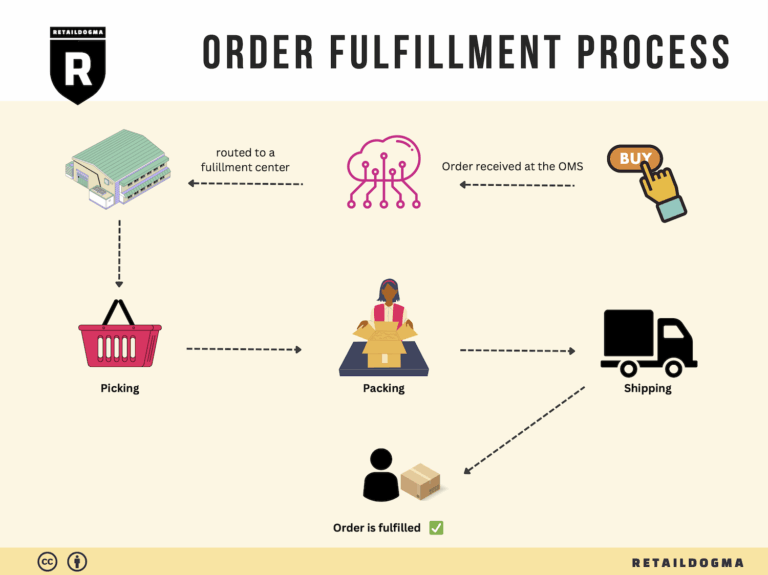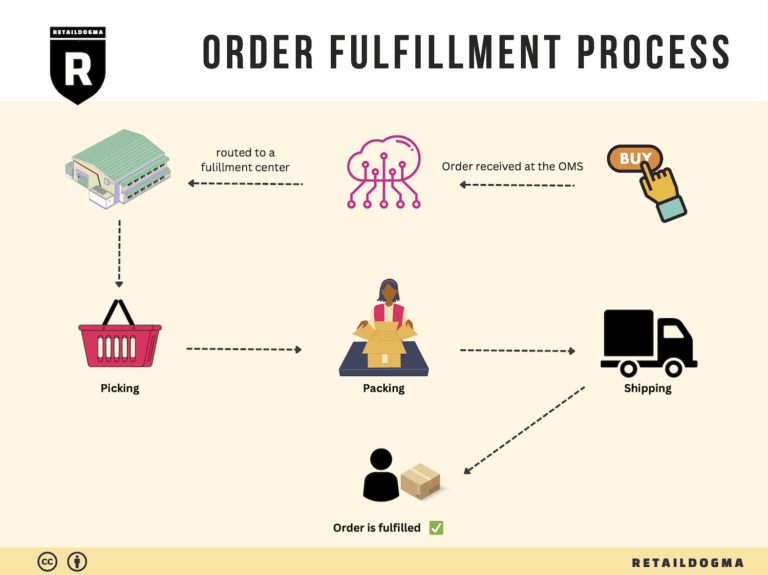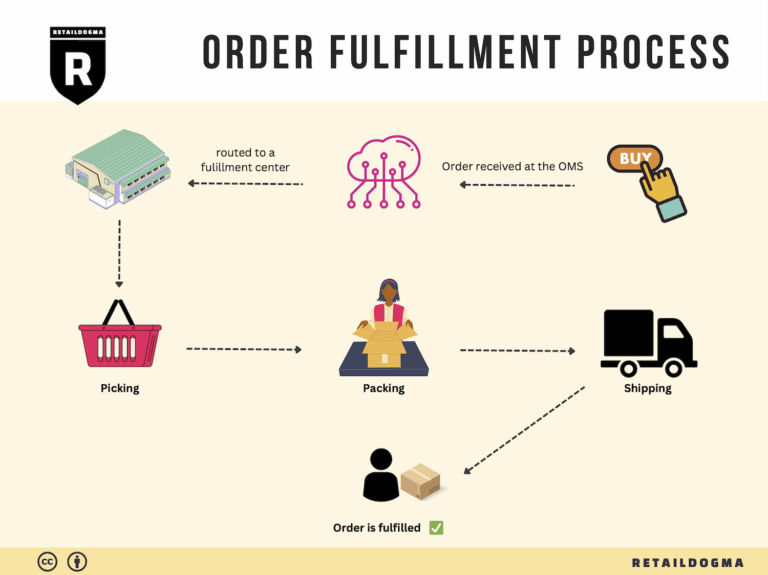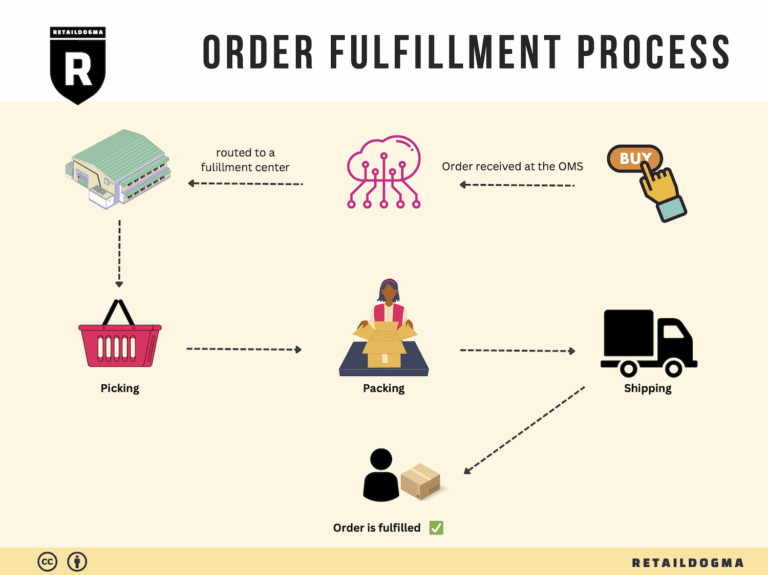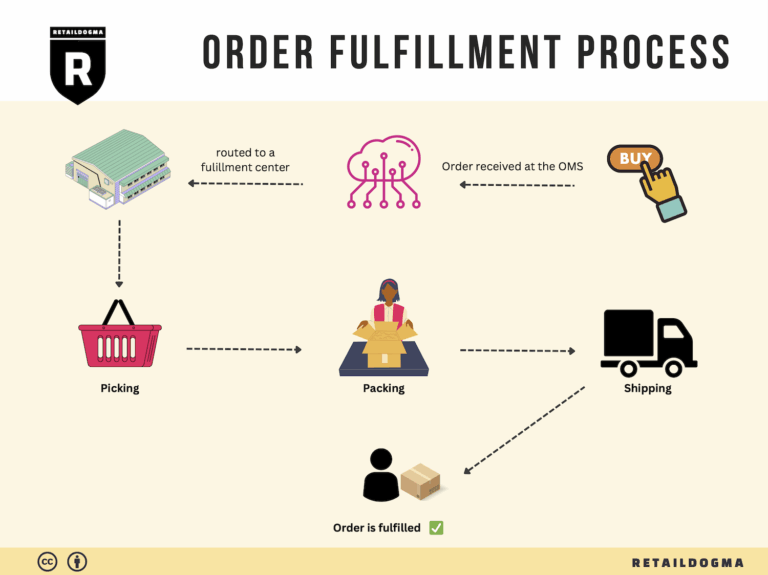Ecommerce Fulfillment Services: The Ultimate Guide (2025)
What is E-commerce Fulfillment? An Introduction for Growing Businesses
Understanding E-commerce Fulfillment: A Vital Component for Growth
For many growing online businesses, the thrill of expanding sales can quickly turn into the stress of packing and shipping orders. As your sales volume increases, so too do the complexities of getting your products to customers efficiently and reliably. This is where e-commerce fulfillment comes into play. Simply put, fulfillment is the process of receiving, storing, and delivering products to your customers. It encompasses everything from inventory management to shipping logistics, and it can significantly impact your customer satisfaction and overall business growth.
As an entrepreneur or operations manager, navigating the fulfillment landscape can feel overwhelming. With various models available, such as Fulfillment by Amazon (FBA) and third-party logistics (3PL), it’s crucial to understand the options that best fit your business needs. Each model has its own set of advantages and challenges, and selecting the right one can be a game-changer for your efficiency and scalability.
This guide will delve into the different fulfillment models available to e-commerce businesses, including an in-depth look at FBA and 3PL services. We will explore the core services offered by fulfillment partners, such as inventory storage, order processing, packaging, and shipping. Additionally, we will provide insights on how to choose the right fulfillment partner for your business, including key factors to consider like location, service offerings, and technology integration.
Pricing is another critical aspect we will cover. Understanding the cost structures of different fulfillment options is essential for budgeting and financial planning. We will break down the typical costs associated with various fulfillment services, helping you to make informed decisions that align with your financial goals.
The ultimate goal of this guide is to empower e-commerce businesses to make smart, strategic decisions about their logistics. By understanding the nuances of fulfillment, you can streamline your operations, enhance your customer experience, and position your business for sustainable growth. Whether you are just starting or looking to scale your existing operations, this guide will provide you with the insights and tools necessary to navigate the fulfillment process confidently.
What You’ll Learn In This Guide
- What is E-commerce Fulfillment? An Introduction for Growing Businesses
- The Order Fulfillment Process: From ‘Buy’ Button to Customer’s Door
- Comparing Fulfillment Models: In-House vs. 3PL vs. Dropshipping
- A Deep Dive into Amazon FBA: Pros, Cons, and Who It’s For
- Core Services Offered by Fulfillment Centers
- How to Choose a Fulfillment Partner: A 6-Point Checklist
- Understanding Fulfillment Pricing: A Breakdown of Common Fees
- Frequently Asked Questions (FAQs) about Fulfillment
- Conclusion: Is Outsourcing Fulfillment the Right Move for Your Business?
- Important Disclaimer
The Order Fulfillment Process: From ‘Buy’ Button to Customer’s Door
1. Receiving Inventory
The order fulfillment process begins with receiving inventory at the fulfillment center. When products arrive, they are checked against purchase orders to ensure accuracy in quantity and condition. This step is crucial because it establishes the foundation for inventory management and affects subsequent operations.
During this phase, each item is assigned a Stock Keeping Unit (SKU), a unique identifier that facilitates tracking and management. Efficient receiving processes can significantly reduce the chances of stock discrepancies, which can lead to delays in fulfilling customer orders. Properly trained staff should verify the incoming goods and handle any discrepancies immediately, ensuring that the inventory is accurately recorded in the system.
2. Warehouse Storage
Once inventory is received and verified, the next step is warehouse storage. Products are organized within the fulfillment center based on various factors such as size, demand, and category. Efficient storage systems are essential for maximizing space and ensuring quick access to items.
Different storage methods can be employed, including pallet racking, shelving, and bin systems. Implementing a robust Warehouse Management System (WMS) allows businesses to keep track of item locations and manage stock levels effectively. Proper organization not only enhances operational efficiency but also helps reduce the time needed for order picking, ultimately leading to faster delivery times.
3. Order Picking
When a customer places an order, the next crucial step is order picking. This process involves retrieving the correct items from the warehouse based on the order details. A well-structured picking process is vital, as it directly impacts order accuracy and fulfillment speed.
Businesses often utilize pick lists—documents that outline the items to be picked, their locations, and quantities. Various picking methods can be employed, such as single order picking (one order at a time) or batch picking (multiple orders at once). The chosen method can depend on the volume of orders and the layout of the warehouse. Streamlining this process ensures that items are gathered quickly and accurately, reducing the risk of errors that could lead to customer dissatisfaction.
4. Order Packing
After picking, the next step is order packing. This phase involves securely packaging items for shipment to ensure they arrive safely at the customer’s door. Proper packing is not only important for protecting products but also for optimizing shipping costs.
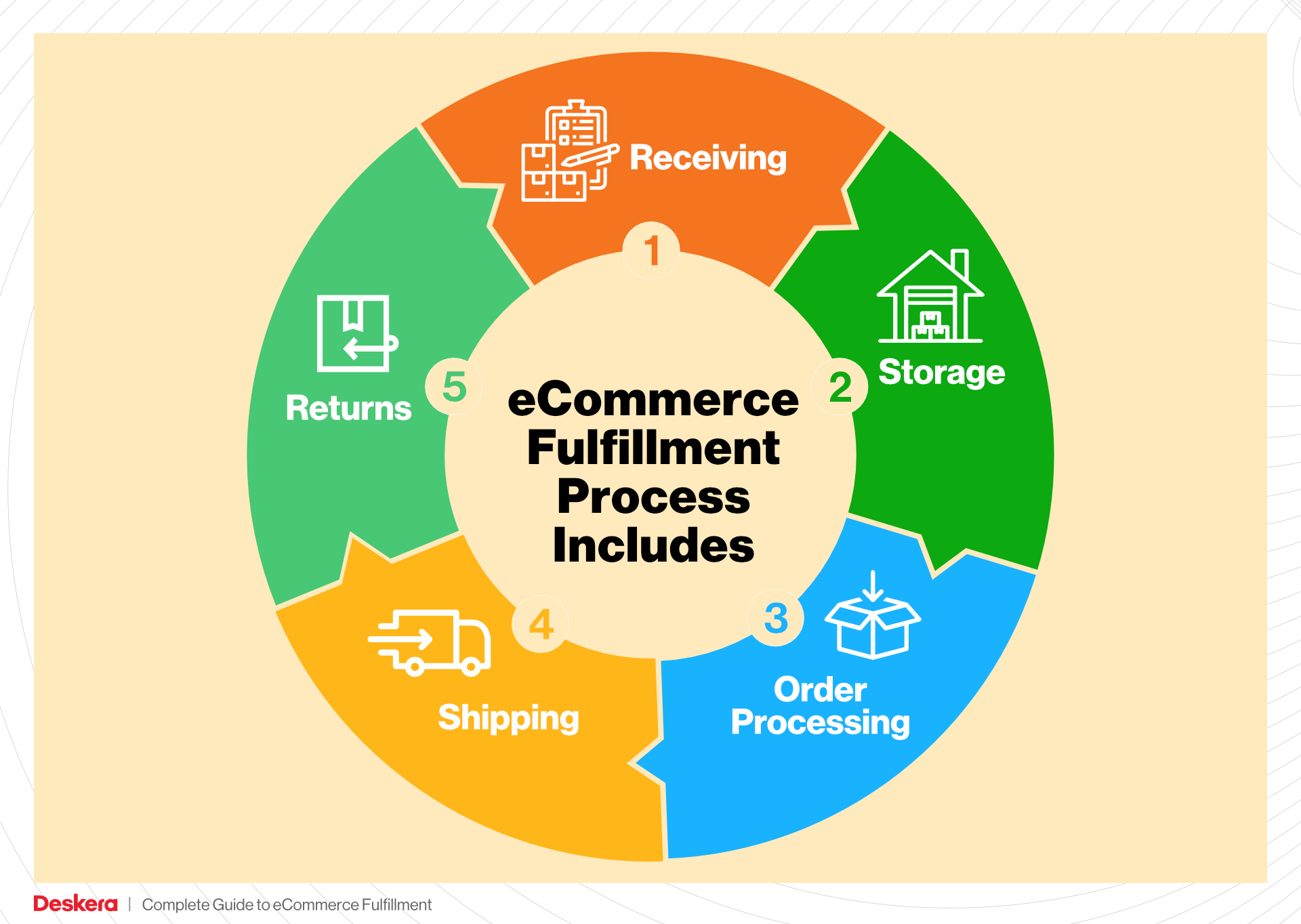
During this step, businesses should consider using packing slips, which provide essential information about the order, including item descriptions and quantities. Additionally, businesses can implement automated packing systems to streamline the process and reduce labor costs. By using appropriate packaging materials and techniques, companies can minimize damage during transit and enhance the customer experience, leading to higher satisfaction and repeat business.
5. Shipping & Delivery
The final step in the order fulfillment process is shipping and delivery. Once orders are packed, they are prepared for dispatch to the customer. This stage is critical as it determines how quickly and efficiently the products reach the end user.
Fulfillment centers typically have partnerships with various shipping carriers, such as UPS, FedEx, or USPS, to facilitate timely delivery. Businesses must select the most appropriate shipping method based on factors like cost, speed, and destination. Additionally, implementing a tracking system allows customers to monitor their orders in real time, improving transparency and trust.
Efficient shipping processes can significantly enhance customer satisfaction, as timely deliveries are often a key driver of repeat purchases. By optimizing shipping routes and utilizing technology, businesses can reduce delivery times and costs, thereby scaling their operations more effectively.
By understanding and optimizing each step of the order fulfillment process, e-commerce businesses can ensure a seamless experience from the moment a customer clicks the ‘Buy’ button until the product arrives at their doorstep. Each phase is interconnected, and focusing on efficiency and accuracy can lead to significant improvements in overall operational performance.
Comparing Fulfillment Models: In-House vs. 3PL vs. Dropshipping
Comparison of Fulfillment Models
| Model | Who Handles Inventory | Best For (Business Stage) | Key Advantage | Key Disadvantage |
|---|---|---|---|---|
| In-House Fulfillment | Business Owner/Team | Established businesses | Full control over inventory and operations | High overhead costs and labor requirements |
| Third-Party Logistics (3PL) | Third-Party Logistics Provider | Growing businesses | Scalability and reduced operational burden | Less control over inventory and shipping |
| Dropshipping | Supplier/Manufacturer | Startups and small businesses | Low upfront investment and risk | Lower profit margins and reliance on suppliers |
In-House Fulfillment
In-house fulfillment is a model where the business itself manages all aspects of inventory, order processing, and shipping. This model is most suitable for established businesses that have the resources to maintain their own warehouse and logistics team. One of the primary advantages of in-house fulfillment is the complete control it offers over inventory management, quality assurance, and customer service. Businesses can implement tailored processes that align with their specific operational needs, leading to potentially higher customer satisfaction. However, this model comes with significant disadvantages, including high overhead costs associated with staffing, warehousing, and technology investments. Additionally, businesses must be prepared to handle fluctuations in order volume and the associated operational challenges.
Third-Party Logistics (3PL)
Third-party logistics (3PL) providers offer a solution where businesses outsource their logistics and fulfillment processes to specialized companies. This model is particularly advantageous for growing businesses that require scalable solutions without the burden of managing logistics internally. A key advantage of 3PL is the ability to leverage the provider’s expertise, technology, and infrastructure, which can lead to improved efficiency and cost savings. Businesses can access advanced logistics capabilities, such as automated order processing and sophisticated inventory management systems, without the need for heavy investment. However, relying on a 3PL means ceding some control over inventory and shipping processes, which can lead to challenges in communication and potential service inconsistencies. Businesses must choose their 3PL partners carefully to ensure alignment with their operational goals.
Dropshipping
Dropshipping is a fulfillment model where the retailer does not hold inventory but instead relies on suppliers to ship products directly to customers. This model is particularly appealing to startups and small businesses due to its low upfront investment and minimal risk. Entrepreneurs can test product ideas and market viability without the need for significant capital tied up in inventory. The primary advantage of dropshipping is the flexibility it provides, allowing businesses to offer a wide range of products without the constraints of inventory management. However, dropshipping also presents challenges, such as lower profit margins and a lack of control over product quality and shipping times. Businesses must maintain strong relationships with reliable suppliers to mitigate these risks and ensure a positive customer experience. Additionally, the dependence on suppliers can lead to complications if they face stock shortages or shipping delays, which can directly impact customer satisfaction.
In summary, choosing the right fulfillment model depends on the specific needs, stage, and resources of the business. Each model presents unique advantages and challenges that should be carefully considered in the context of long-term business goals and operational strategies.
A Deep Dive into Amazon FBA: Pros, Cons, and Who It’s For
Understanding Fulfillment by Amazon (FBA)
Fulfillment by Amazon (FBA) is a service that allows e-commerce sellers to store their products in Amazon’s vast network of fulfillment centers. When a customer places an order for a product listed through FBA, Amazon takes care of storage, packaging, and shipping. This service is particularly valuable for e-commerce business owners looking to leverage Amazon’s infrastructure to scale their operations.
FBA was launched in September 2006 and has since grown to encompass over 180 fulfillment centers worldwide, strategically located to facilitate quick shipping and delivery. Sellers benefit not only from Amazon’s logistics but also from its customer service capabilities. When sellers use FBA, their products become eligible for Amazon Prime, allowing Prime members to receive their orders in two days, which can significantly enhance sales potential.
How FBA Works
-
Inventory Management: Sellers send their products to Amazon’s fulfillment centers. Amazon takes care of the inventory management, ensuring that products are stored safely and are easily accessible for fulfillment.
-
Order Processing: When a customer places an order for an FBA product, Amazon handles the entire process. This includes picking the product from the warehouse, packing it, and shipping it directly to the customer.
-
Customer Service: Amazon also manages customer inquiries and returns related to FBA orders. This ensures that sellers can focus on growing their business rather than dealing with logistical issues.
-
Multi-Channel Fulfillment: Sellers can use FBA to fulfill orders not only from Amazon but also from their own websites or other sales channels. This capability allows businesses to streamline their logistics under one roof.
Pros of Using FBA
-
Prime Eligibility: One of the most significant advantages of FBA is that it makes products eligible for Amazon Prime, which can lead to increased visibility and higher sales. Prime members are more likely to purchase items with Prime shipping options due to the convenience it offers.
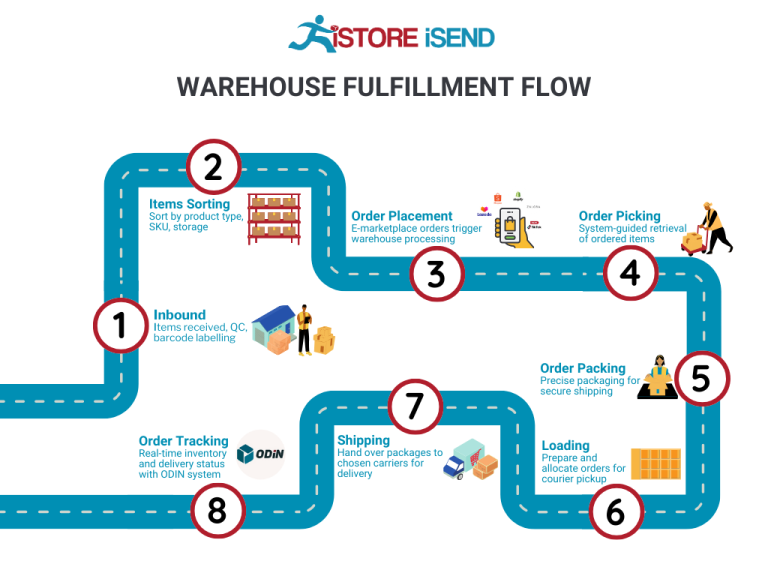
-
Customer Trust: Products fulfilled by Amazon often have higher trust levels among customers. The association with Amazon’s brand and its customer service gives buyers confidence in their purchases, leading to potentially higher conversion rates.
-
Multi-Channel Fulfillment: FBA allows sellers to fulfill orders from various sales channels using Amazon’s logistics network. This means that whether a customer buys from Amazon, eBay, or a seller’s own website, Amazon can handle the fulfillment process, simplifying logistics.
-
Scalability: For e-commerce businesses looking to scale, FBA offers a ready-made solution to handle increased order volumes without the need to invest in additional warehousing or logistics infrastructure.
-
Time-Saving: By outsourcing fulfillment to Amazon, sellers can save time on logistics management, allowing them to focus on marketing, product development, and overall business growth.
Cons of Using FBA
-
High Fees: While FBA can streamline operations, it comes at a cost. Sellers are subject to various fees, including storage fees for inventory and fulfillment fees for each item sold. These costs can add up and eat into profit margins, especially for low-margin products.
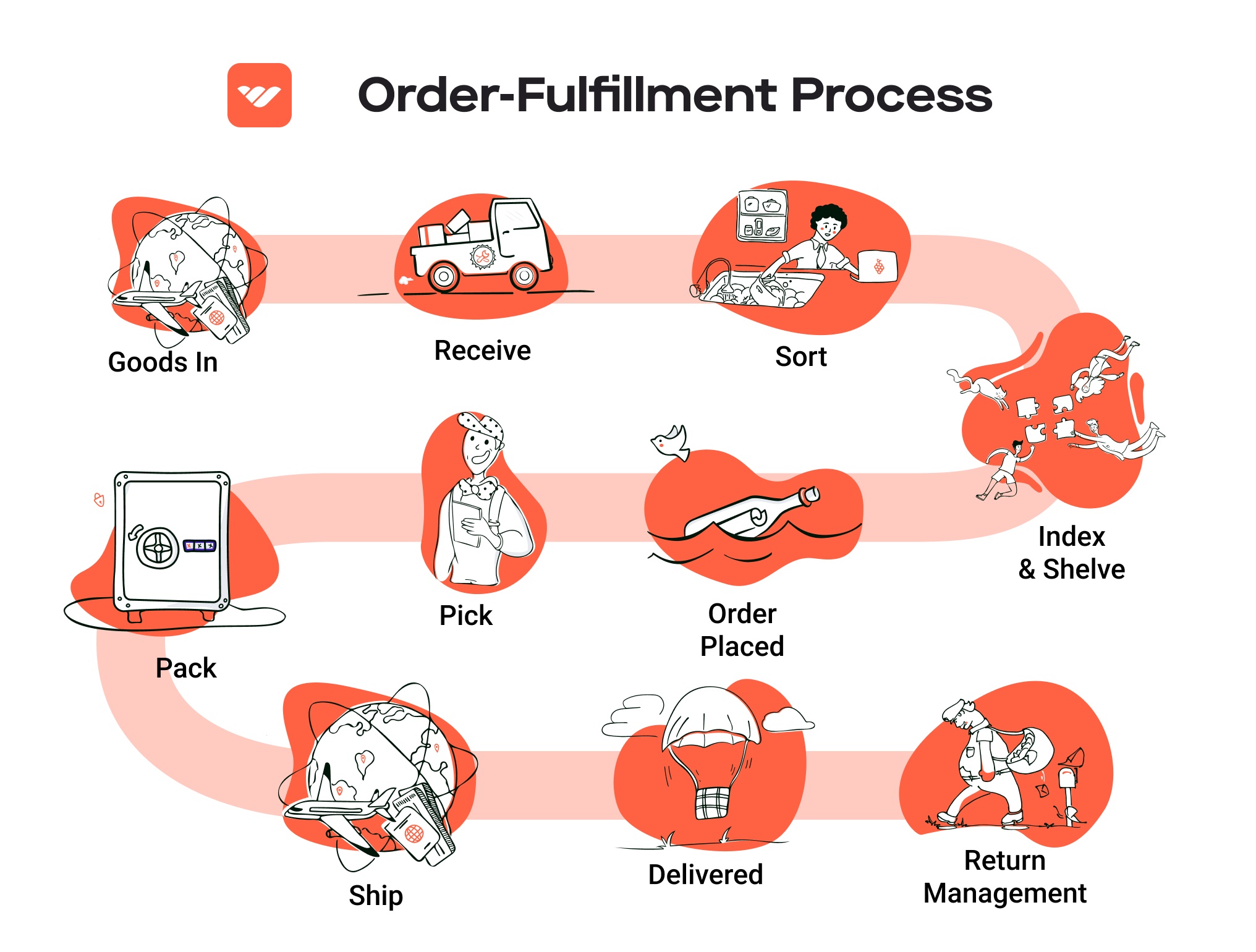
-
Strict Inventory Rules: Amazon enforces strict inventory management policies. Sellers must adhere to guidelines regarding how many units they can send to fulfillment centers, and they are penalized for excess inventory or for items that do not sell within a specified period. This can lead to additional costs or the need to manage inventory more closely.
-
Commingling Risks: FBA allows for commingling of inventory, which means that your products may be mixed with those of other sellers. This can pose risks such as counterfeit products or discrepancies in inventory tracking. If a customer receives a defective or counterfeit item, it reflects poorly on your brand, even if the issue originated from another seller’s inventory.
-
Less Control Over Shipping: While Amazon handles shipping, sellers have less control over how their products are packaged and shipped. This can be a concern for businesses that have specific branding requirements or need to ensure a particular presentation for their products.
Who is FBA Best For?
Fulfillment by Amazon is best suited for:
-
Small to Medium-Sized Businesses: Businesses looking to scale operations without investing heavily in logistics can benefit significantly from FBA. It allows them to leverage Amazon’s extensive network without the overhead of managing a fulfillment center.
-
Brands with Established Products: Companies with products that have consistent demand can find FBA especially advantageous, as they can predict inventory needs and manage costs effectively.
-
Sellers with Multiple Sales Channels: Businesses that sell on Amazon as well as other platforms will find FBA’s multi-channel fulfillment capabilities beneficial, as it centralizes their logistics.
-
Entrepreneurs Focused on Growth: For entrepreneurs who want to focus on expanding their product lines or marketing efforts rather than the complexities of order fulfillment, FBA provides a way to offload those responsibilities.
In conclusion, while Fulfillment by Amazon presents numerous advantages that can enhance operational efficiency and scalability, it also carries certain risks and costs that sellers must carefully evaluate. Understanding both the pros and cons is crucial for businesses looking to leverage this powerful fulfillment solution effectively.
Core Services Offered by Fulfillment Centers
Inventory Management & Warehousing
Fulfillment centers provide comprehensive inventory management and warehousing solutions that are critical for e-commerce businesses aiming to scale effectively. This service encompasses the storage, organization, and tracking of products within a facility. Fulfillment centers utilize advanced inventory management systems that allow businesses to monitor stock levels in real-time, receive notifications when inventory is low, and manage reordering processes seamlessly.
The benefits of efficient inventory management are manifold. First, businesses can minimize the risks associated with stockouts or overstocking, both of which can lead to lost sales or increased holding costs, respectively. With accurate inventory tracking, e-commerce businesses can make informed decisions regarding purchasing and sales strategies. Moreover, the strategic placement of fulfillment centers in high-demand regions can significantly reduce shipping times, enhancing customer satisfaction and loyalty. This service is vital for maintaining an efficient supply chain, especially during peak seasons when demand surges.
Pick and Pack Services
Pick and pack services are at the core of fulfillment operations. This process involves selecting the ordered items from storage, packing them securely for shipment, and preparing them for delivery to customers. Fulfillment centers employ specialized staff and technology to ensure that orders are picked accurately and efficiently. Many centers utilize automated systems, barcode scanning, and inventory management software to streamline this process, reducing the risk of errors and improving speed.
The advantages of effective pick and pack services are crucial for any e-commerce business. Fast and accurate order fulfillment directly impacts customer satisfaction and retention. In an age where consumers expect quick delivery, fulfillment centers that excel in pick and pack services can help businesses meet these demands. Additionally, well-packaged products reduce the likelihood of damage during transit, further enhancing the customer experience. By outsourcing these services, e-commerce businesses can focus on their core competencies, such as marketing and product development, while leaving logistics to the experts.
Kitting and Assembly
Kitting and assembly services involve combining multiple products into a single package or assembling products before they are shipped to customers. This service is particularly beneficial for businesses that offer bundled products, promotional kits, or require assembly of items prior to shipment. Fulfillment centers have the capability to handle these tasks efficiently, utilizing skilled labor and the right tools to ensure that the final product meets quality standards.
The benefits of kitting and assembly services are significant. First, they simplify the order fulfillment process for businesses, allowing them to offer more complex product offerings without increasing overhead. For example, a business selling a DIY furniture kit can have the components pre-assembled and packaged by the fulfillment center, ensuring that customers receive everything they need in one shipment. This not only enhances the customer experience but also reduces the time and effort required for order processing. Additionally, bundling products can increase average order value, providing a direct boost to sales.
Returns Management (Reverse Logistics)
Returns management, often referred to as reverse logistics, is a critical service offered by fulfillment centers. This process involves handling returned products, assessing their condition, restocking items, and processing refunds or exchanges. Effective returns management is essential for maintaining customer satisfaction, as a smooth return process can significantly influence a customer’s perception of a brand.
The advantages of efficient returns management are manifold. A streamlined return process not only enhances customer trust but also encourages repeat purchases. When customers feel confident that they can return items without hassle, they are more likely to complete a purchase, knowing they have the option to return if needed. Moreover, fulfillment centers often employ automated systems to track returns and restock products, which helps minimize losses associated with returned merchandise. By outsourcing returns management, e-commerce businesses can focus on growth strategies rather than the complexities of handling returns.
In summary, fulfillment centers provide a suite of essential services that can empower e-commerce businesses to scale effectively. By leveraging their expertise in inventory management, pick and pack services, kitting and assembly, and returns management, businesses can enhance their operational efficiency, improve customer satisfaction, and ultimately drive sales growth.
How to Choose a Fulfillment Partner: A 6-Point Checklist
Location & Warehouse Network
Choosing a fulfillment partner with strategically located warehouses is crucial for ensuring timely deliveries. A robust warehouse network can significantly reduce shipping times and costs, especially if you target multiple geographic regions.
Key Questions to Ask:
– How many fulfillment centers do you operate, and where are they located?
– Are your warehouses situated near major transportation hubs (e.g., highways, airports)?
– Can you provide options for regional shipping to meet customer demands?
A well-placed fulfillment center allows you to take advantage of local shipping rates and speeds. For example, if you sell primarily to the East Coast, having a fulfillment center in that region can significantly enhance your service quality.
Technology & Integrations
The technology stack of a fulfillment partner plays a vital role in the efficiency of order processing and inventory management. Look for partners that offer robust software solutions that integrate seamlessly with your existing e-commerce platforms.
Key Questions to Ask:
– What fulfillment technology do you use, and how does it integrate with our e-commerce platform?
– Do you provide real-time inventory tracking and order status updates?
– Can you accommodate various selling channels (e.g., Amazon, eBay, your website)?
A partner with advanced technology can help automate many processes, reduce errors, and improve order visibility. Additionally, real-time data helps you make informed decisions about inventory management and sales forecasting.
Specializations (e.g., Cold Storage, Oversized Items)
Different businesses have unique needs based on the type of products they sell. If your business involves specialized items like perishables or oversized goods, ensure your fulfillment partner can cater to these requirements.
Key Questions to Ask:
– Do you have the capability to handle specialized storage needs, such as cold storage or oversized items?
– What are your procedures for handling sensitive products?
– Can you provide examples of how you have successfully managed these types of products for other clients?
Choosing a partner with the right specializations ensures that your products are stored and handled correctly, reducing the risk of damage or spoilage.
Scalability & Capacity
As your business grows, your fulfillment needs will evolve. It’s essential to partner with a fulfillment provider that can scale operations to meet your changing demands.
Key Questions to Ask:
– What is your current capacity for handling increased order volumes?
– How quickly can you scale operations during peak seasons or unexpected surges?
– Can you provide examples of how you have supported clients during their growth phases?
A scalable partner will have the resources and flexibility to accommodate your needs, whether you’re expanding into new markets or experiencing seasonal spikes in demand.
Pricing and Contracts
Understanding the pricing structure and contractual obligations is essential to avoid unexpected costs that can erode your profit margins. Transparency in pricing helps you to forecast your expenses accurately.
Key Questions to Ask:
– What is your pricing model (e.g., per order, per item, monthly fees)?
– Are there any hidden fees (e.g., storage, picking, packing)?
– What are the terms of the contract, and are there options for renegotiation or cancellation?
Being clear on pricing and contract terms can help you budget effectively and avoid any unpleasant surprises down the line.
Customer Support & Reviews
Reliable customer support is a key factor in maintaining a smooth operation. Your fulfillment partner should offer responsive and knowledgeable support to address any issues that arise.
Key Questions to Ask:
– What customer support options do you provide (e.g., phone, email, chat)?
– What are your average response times for support inquiries?
– Can you provide testimonials or case studies from existing clients?
Researching reviews and feedback from other businesses can offer valuable insights into the partner’s reliability and service quality. A strong customer support system can significantly reduce stress and improve your overall fulfillment experience.
Conclusion
Choosing the right fulfillment partner is a critical decision that can impact your e-commerce business’s success. By carefully evaluating potential partners based on the criteria outlined in this checklist, you can ensure that you select a provider that aligns with your operational needs and growth ambitions. Taking the time to ask the right questions and conduct thorough due diligence will lead to a more productive and profitable partnership in the long run.
Understanding Fulfillment Pricing: A Breakdown of Common Fees
Initial Setup Fees
When partnering with a fulfillment center, the initial setup fee is often the first cost you will encounter. This fee typically covers the onboarding process, which may include account creation, system integration, and initial training on the fulfillment platform. The amount can vary significantly based on the complexity of the services you require and the size of your inventory.
For example, a straightforward integration with basic inventory management might incur a lower fee, while a more complex setup involving multiple sales channels and advanced reporting features could lead to a higher cost. It’s essential to clarify what is included in the setup fee and whether ongoing support is provided as part of the service.
Receiving Fees
Receiving fees are charged when your products arrive at the fulfillment center. This fee is usually calculated per pallet or item and covers the costs associated with unloading, inspecting, and stocking your products in the warehouse.
Factors influencing the receiving fee include the volume of products being delivered and the complexity of the receiving process. For instance, bulk shipments may incur a lower per-unit fee than smaller, mixed loads due to the increased handling required. To optimize costs, consider consolidating shipments when possible and ensuring that your products are properly labeled and packaged to streamline the receiving process.
Storage Fees (per pallet/bin)
Storage fees are ongoing charges for the space your inventory occupies within the fulfillment center. These fees can be assessed monthly and are generally calculated based on the volume of space your products take up, usually measured in pallets or bins.
The storage fee structure may vary by provider, with some offering tiered pricing based on the volume of goods stored. For example, businesses with higher inventory turnover may benefit from lower storage rates compared to those with slower-moving products. To minimize storage costs, regularly review your inventory levels and implement effective inventory management strategies to reduce excess stock.
Pick & Pack Fees (per item/order)
Pick and pack fees are incurred each time an order is processed. This fee typically covers the costs of selecting the items from storage (picking) and preparing them for shipment (packing).
These fees are usually calculated per item or per order, depending on the fulfillment center’s pricing model. For example, if an order contains multiple items, the fulfillment center may charge a fee for each item picked, plus a flat rate for packing. To reduce these fees, consider optimizing your product offerings by bundling items or reducing the number of SKUs you offer, which can lead to more efficient picking processes.
Shipping Fees
Shipping fees are the costs associated with transporting your products from the fulfillment center to your customers. These fees can vary widely based on several factors, including the shipping method chosen (e.g., standard, expedited), the destination, and the size and weight of the package.
Fulfillment centers often have partnerships with various carriers, allowing them to negotiate better rates that may be passed on to you. It’s crucial to understand the shipping options available and how they impact your overall fulfillment costs. Using a multi-carrier strategy can also be advantageous, as it allows you to choose the most cost-effective shipping option for each order.
Tips for Getting an Accurate Quote
To ensure you receive an accurate fulfillment pricing quote, consider the following tips:
-
Provide Detailed Information: When requesting a quote, supply comprehensive details about your inventory, including the types of products, average order volume, and storage requirements.
-
Ask About All Fees: Inquire about all potential fees, including hidden charges that may not be immediately apparent, such as returns processing or long-term storage fees.
-
Negotiate Terms: Don’t hesitate to negotiate terms based on your volume and specific needs. Some fulfillment centers may offer discounts for higher volumes or long-term contracts.
-
Review Service Level Agreements (SLAs): Ensure that the quoted fees align with the service levels promised, particularly regarding shipping times and order accuracy.
-
Consider Future Needs: Think about your growth trajectory and how your fulfillment needs may change over time. Discuss scalability options with the provider to accommodate future growth without incurring excessive costs.
By understanding these common fulfillment pricing models and following these tips, you can make informed decisions that enhance your e-commerce operations while keeping costs manageable.
Frequently Asked Questions (FAQs) about Fulfillment
1. What is the Amazon ABQ1 Fulfillment Center?
The Amazon ABQ1 Fulfillment Center is one of Amazon’s facilities dedicated to the Fulfillment by Amazon (FBA) program. Located in Albuquerque, New Mexico, it serves as a hub for storing, processing, and shipping products sold by third-party sellers on the Amazon platform. This facility allows sellers to leverage Amazon’s logistics network, ensuring efficient delivery to customers.
2. How does the ABQ1 Fulfillment Center impact shipping times?
The ABQ1 Fulfillment Center is strategically located to optimize shipping routes, enabling Amazon to meet its two-day shipping promise for Prime members. Products stored at this center are processed and shipped quickly, often leading to faster delivery times compared to shipping directly from the seller’s location.
3. What types of products can be stored at the ABQ1 Fulfillment Center?
The ABQ1 Fulfillment Center can store a wide variety of products, including consumer electronics, household items, clothing, and more. However, there are restrictions on certain items, such as hazardous materials or oversized products. Sellers should review Amazon’s guidelines to ensure their products comply with storage requirements.
4. What is the difference between a warehouse and a fulfillment center?
A warehouse is primarily a storage facility where goods are kept until they are needed. In contrast, a fulfillment center focuses on the entire order fulfillment process, including receiving, storing, packing, and shipping products directly to customers. Fulfillment centers are designed to streamline logistics and enhance the efficiency of order processing.
5. How much do fulfillment services cost at Amazon?
Costs for fulfillment services at Amazon vary based on factors such as the size and weight of the products, the type of service (e.g., standard or expedited shipping), and additional features like storage fees. Generally, sellers can expect to pay per unit for fulfillment services, along with monthly storage fees for inventory stored in the fulfillment center.
6. What is a 3PL, and how does it differ from Amazon FBA?
A Third-Party Logistics (3PL) provider offers outsourced logistics services, including warehousing, transportation, and order fulfillment. Unlike Amazon FBA, which is specific to Amazon’s platform and logistics network, 3PLs can serve multiple e-commerce platforms and provide customized solutions tailored to a business’s needs. Sellers may choose a 3PL if they require more flexibility or wish to diversify their sales channels.
7. How can sellers optimize their inventory management at the ABQ1 Fulfillment Center?
To optimize inventory management, sellers should regularly monitor their stock levels, analyze sales trends, and adjust their inventory accordingly. Utilizing Amazon’s Inventory Performance Index (IPI) can help identify slow-moving products and inform restocking decisions. Additionally, sellers should take advantage of Amazon’s tools for forecasting demand to maintain optimal inventory levels.
8. What are the benefits of using the ABQ1 Fulfillment Center for my business?
Utilizing the ABQ1 Fulfillment Center provides several benefits, including access to Amazon’s extensive logistics network, faster shipping times, and improved customer service through Amazon’s support. Additionally, sellers can leverage Amazon Prime’s vast customer base, which can lead to increased sales and higher visibility for their products.
9. Are there any restrictions on what I can send to the ABQ1 Fulfillment Center?
Yes, there are specific restrictions on the types of products that can be sent to the ABQ1 Fulfillment Center. Items that are hazardous, perishable, or oversized may not be eligible for FBA. Sellers should review Amazon’s policies and guidelines to ensure compliance and avoid potential issues with their inventory.
10. How can I track my shipments from the ABQ1 Fulfillment Center?
Sellers can track their shipments through the Amazon Seller Central platform. Once an order is processed and shipped from the ABQ1 Fulfillment Center, tracking information will be provided, allowing sellers to monitor the shipment’s status and keep customers informed about delivery timelines.
Conclusion: Is Outsourcing Fulfillment the Right Move for Your Business?
Evaluating the Benefits of Outsourcing Fulfillment
Outsourcing fulfillment can be a transformative decision for e-commerce businesses aiming to scale efficiently. By leveraging a fulfillment service, businesses can save significant time and resources, allowing them to focus on core activities such as product development and marketing. Fulfillment partners, particularly those within established networks like Amazon’s, can streamline inventory management, order processing, and shipping logistics. This not only enhances operational efficiency but also improves customer satisfaction through faster delivery times.
Another critical advantage of outsourcing fulfillment is scalability. As your business grows, so do the complexities of handling increased order volumes. A reliable fulfillment partner can seamlessly adjust to your changing needs, whether that involves expanding storage capabilities or optimizing shipping routes. This adaptability is essential for businesses looking to enter new markets or launch new products without the burden of managing logistics in-house.
Moreover, partnering with a fulfillment expert provides access to industry knowledge and technology that may be otherwise unavailable. These partners often utilize advanced software for inventory tracking, analytics, and reporting, giving you insights that can drive strategic decisions.
However, choosing the right fulfillment partner is paramount to your success. Conduct thorough due diligence to assess their capabilities, technology, and reputation. A misaligned partnership can hinder growth rather than facilitate it.
Take Action Now
To determine if outsourcing fulfillment is the right next step for your business, conduct an audit of your current shipping processes. Evaluate your operational efficiency, customer satisfaction levels, and overall scalability. This assessment will provide clarity on whether a fulfillment partner can enhance your business strategy and help you achieve your growth objectives. Don’t leave your logistics to chance—make an informed decision today.
Important Disclaimer
⚠️ Important Disclaimer
The information in this guide is for educational purposes. Fulfillment services, pricing, and platform features change frequently. Always conduct your own due diligence and consult with providers directly before making business decisions.
